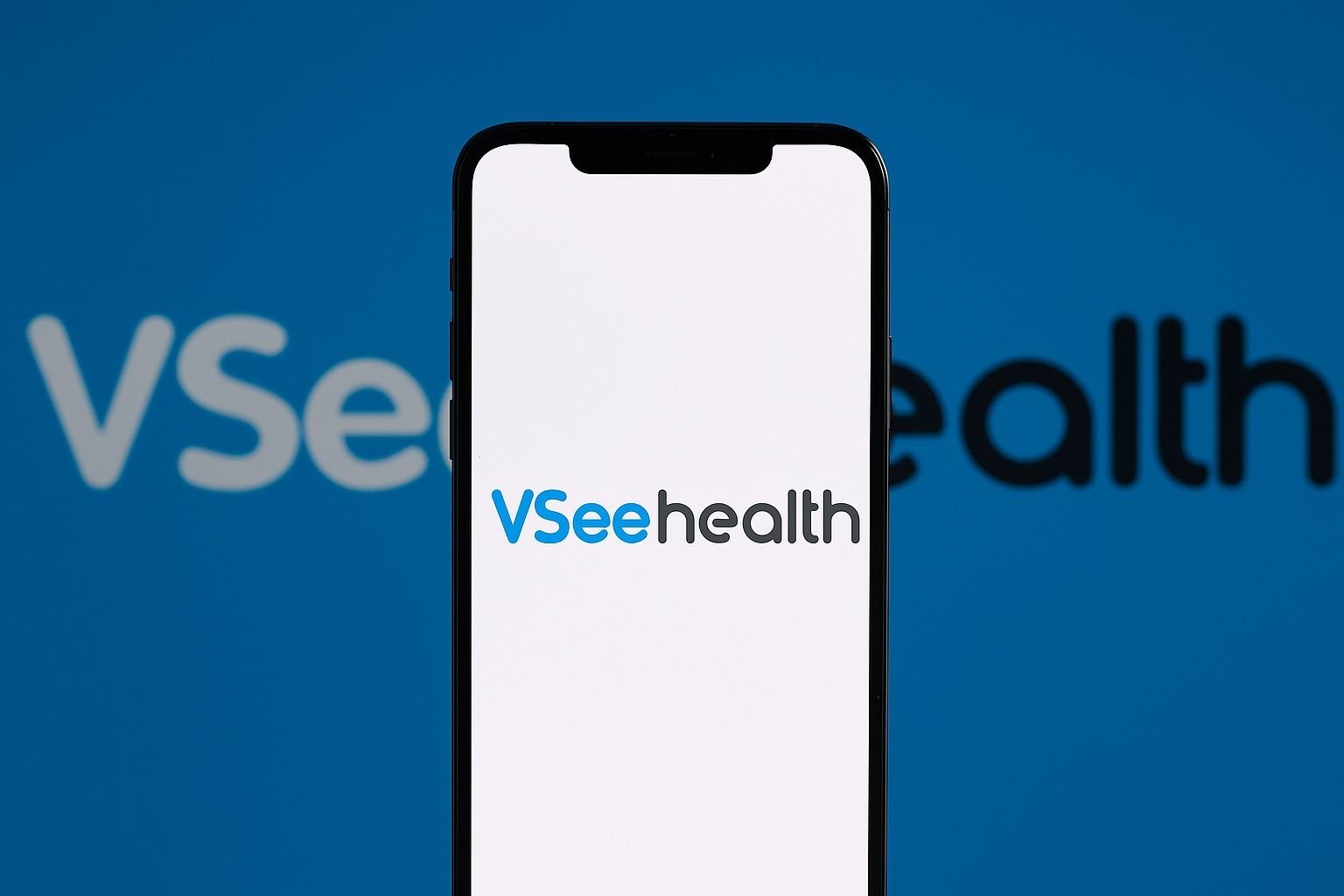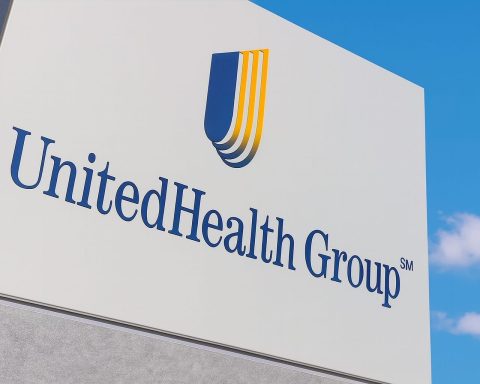- Major hospital contract fuels growth: VSee Health just inked a three-year platform services deal with a top U.S. academic health system, deploying virtual urgent care across 100+ facilities with no revenue cap, meaning income scales directly with usage [1]. Services start Jan 1, 2026, in the region’s only Level 1 trauma center – a model VSee expects to replicate nationally [2].
- Federal security approval opens big markets: On Oct 28, 2025, VSee’s telehealth platform earned FedRAMP High Authorization from the U.S. Department of Health and Human Services [3]. This rigorous certification lets federal agencies (like the VA or military) use VSee’s system for secure telemedicine, vastly expanding potential government partnerships [4]. “With FedRAMP High ATO, agencies can deploy VSee for secure, real-world patient care—anytime, anywhere,” said CEO Dr. Milton Chen [5].
- Stock on a rollercoaster: VSee’s share price has doubled in recent weeks, climbing from about $0.45 in mid-October to around $1.00–$1.10 by early November [6]. The FedRAMP news alone sent the micro-cap stock up as much as 285% at one point [7], with trading volume exploding (187 million shares vs ~5 million average) [8]. Analysts are bullish but cautious: Maxim Group sees +400% upside ($5 target) [9], yet Invezz warned the “immediate” dilution risk (need for fundraising) could warrant selling into the rally [10].
- Financial momentum with caveats: VSee’s revenue is surging – Q2 2025 sales hit $3.4 million (up 98% year-on-year) [11] – thanks to the acquisition of iDoc Telehealth and new service lines [12]. A recent $10M+ teleradiology contract is set to double annual recurring revenue [13]. At the same time, the company is unprofitable (net loss ~$64M in 2024) and was out of SEC compliance until it caught up on filings in October. To maintain its Nasdaq listing, VSee eliminated $5M in SPAC debt [14], shoring up its balance sheet and boosting shareholder equity.
Company Overview: Telehealth for High-Acuity Care
VSee Health, Inc. is a Silicon Valley-founded telehealth technology and services provider specializing in high-acuity virtual care. Founded in 2008 by Dr. Milton Chen, VSee built a secure video telemedicine platform so robust it was even utilized by NASA for astronaut healthcare [15]. Today, after merging with iDoc Telehealth via a SPAC deal in mid-2024, VSee offers an integrated suite of telehealth solutions for hospitals and health systems. The company’s headquarters are in Massachusetts, and it has ~154 employees as of 2025 [16].
Business Model: VSee’s platform combines telehealth software with physician services to enable things like remote emergency consultations, tele-ICU coverage, and on-demand specialty care. Its recently acquired iDoc Telehealth unit brings clinical expertise in critical care and neurology – treating stroke, brain trauma, and ICU patients via virtual means [17]. On the technology side, VSee provides modular “building blocks” for digital health: secure video and device data streaming, EHR connectors, patient engagement tools, remote exam kits, and even AI-powered features [18] [19]. Notably, VSee emphasizes a no-code/low-code platform approach, so healthcare clients can customize workflows without heavy IT development [20]. The company primarily sells to hospitals (often through partner resellers and affiliates) [21] rather than direct-to-consumer.
Leadership: VSee is led jointly by co-CEOs Dr. Imoigele Aisiku – a physician-entrepreneur with 16+ years in telemedicine – and founder Dr. Milton Chen, PhD, the original creator of VSee’s technology [22]. Dr. Aisiku, who joined as part of the iDoc merger, also serves as Chairman of the Board [23]. Under their leadership, the company has been positioning itself as a “rapidly growing leader in AI-powered telehealth,” claiming to redefine a $787 billion digital healthcare market with its scalable platform [24]. VSee boasts over 1,000 clients, including high-profile names like HHS, McKesson, DaVita, the nation of Qatar, and even NASA – a strong validation of its technology [25]. Such partnerships and deployments give VSee valuable credibility despite its small size.
Latest News & Catalysts (Late 2025)
Landmark 3-Year Hospital System Contract (Nov 2025)
VSee’s most significant recent win came on November 4, 2025, when it announced a three-year agreement to provide its telehealth platform to a major non-profit academic health system [26]. The unnamed partner operates 100+ hospitals and clinics and is the #1 ranked hospital in its region (with multiple nationally ranked specialties) [27]. Importantly, this enterprise-wide deal will roll out VSee’s virtual urgent care and behavioral health services across the entire hospital network [28]. The contract is structured as volume-based with no upper reimbursement limit, meaning there’s no revenue cap – VSee gets paid per usage, with unlimited upside if patient volumes are high [29] [30].
“This enterprise-scale deployment validates our platform’s ability to integrate seamlessly with the most complex and prestigious health systems in the country,” said Dr. Imo Aisiku, VSee’s Co-CEO, calling the open-ended volume structure and top-tier partner a “reference model” for signing other large hospital networks [31]. In other words, landing this flagship client (a Level 1 trauma center affiliated with a leading medical school) is not just immediate revenue – it’s a showcase that could attract similar big-name hospitals to VSee [32]. VSee explicitly plans to use it as a “national blueprint” to pitch additional multi-hospital deals, especially among academic medical centers and safety-net systems under pressure to expand ER and behavioral health capacity [33].
Revenue impact: While financial terms weren’t fully disclosed, management indicated this deal has “unlimited revenue potential” since it scales with patient encounters [34]. The services go live on January 1, 2026 [35], so it won’t affect 2025 earnings much, but it sets up a meaningful new revenue stream for 2026 onwards. VSee’s ability to implement across 100+ sites will be closely watched in early 2026. If successful, this single contract could markedly boost the company’s top line and accelerate its move toward positive cash flow.
Federal Security Clearance Unlocks Government Market (Oct 2025)
Another breakthrough came on October 28, 2025, when VSee achieved FedRAMP High ATO (Authority to Operate at the highest federal security level) from the U.S. Department of Health and Human Services [36]. This is a big deal in the cloud software world: FedRAMP High is a stringent cybersecurity certification typically required for any cloud service used by U.S. government agencies handling sensitive data. VSee is now one of the few telehealth platforms to reach this level, allowing any federal agency (not just HHS) to deploy VSee’s system for telehealth where High-level FedRAMP compliance is mandated [37] [38].
Practically, this opens the door for VSee to pursue contracts with entities like the Department of Veterans Affairs, Department of Defense health units, FEMA/ASPR, and other federal healthcare initiatives. The company highlighted how its platform is tailored for disaster response and remote care, citing a July 2025 incident where VSee was used by HHS’s emergency team to restore services at the only hospital in St. Croix after a cyberattack [39] [40]. VSee’s secure telemedicine “bridge” helped clear a backlog of 250+ radiology studies within days, keeping the hospital operational [41] – a real-life proof of concept for crisis telehealth.
With FedRAMP High in hand, VSee markets itself as “deployment-ready” for government partners. Its platform offers enterprise-grade encryption, HIPAA compliance, health data interoperability, and rapid multi-site setup, all of which are crucial for federal use [42]. “Agencies can deploy VSee for secure, real-world patient care — anytime, anywhere,” CEO Milton Chen noted [43], underscoring that this certification is “a major step in expanding our government partnerships.”
Competitive edge: This federal clearance sets VSee apart from many telehealth startups. Few competitors in telehealth have FedRAMP High credentials [44], which could make VSee a go-to choice for large government-funded telehealth programs (a market VSee pegs at $455 billion through 2030) [45]. The news of the approval acted as a strong validation for VSee’s security and reliability – and it caught investor attention, sparking a sharp rally in the stock (more on that below).
Teleradiology Expansion and $10M Contract (Oct 2025)
VSee is also aggressively growing its teleradiology business – remote reading of medical imaging for hospitals that need off-hours or specialist support. On October 21, 2025, the company announced a “game-changing” teleradiology contract worth $10+ million over two years [46]. This multi-year deal (executed in May 2025 with service launch in June) is with a “premier Level 1 hospital system” and is expected to double VSee’s annual recurring revenue [47]. It even has provisions for an extra $5M in upside if certain expansions occur [48]. In the press release, VSee touted this as transformative, “igniting explosive growth in [a] booming telehealth sector” [49] – bold language reflecting management’s high hopes.
Beyond that single contract, VSee reported it had expanded its teleradiology services to 25 hospitals by Q3 2025, with 17 integrations completed by August and the rest by year-end [50]. In just six months, VSee’s network performed 100,000+ radiology reads for these hospitals [51]. This contributed to the huge Q2 revenue jump (98% YoY) and demonstrates strong demand for radiology support. By December 2025, the goal is full rollout to all 35 contracted hospital sites, which would yield roughly $3 million in annualized revenue from teleradiology alone [52].
For investors, the takeaway is that teleradiology has become a key growth driver for VSee. It’s a recurring revenue service with high margins (reading scans remotely is cost-efficient once the platform is in place). Notably, VSee achieving 100k reads across 18 hospitals in half a year indicates significant utilization [53]. The FedRAMP news also plays in here: VSee now claims access to a $455 billion federal telehealth opportunity through 2030, much of which involves radiology and diagnostics for veterans and rural clinics [54]. If VSee can leverage its certified status, it could bid on large government tele-radiology programs (for example, the VA’s teleradiology needs or CDC/NRHA initiatives to manage emergency department volumes [55]).
Strengthening Finances and Nasdaq Compliance (Sept–Oct 2025)
Like many young tech firms, VSee faced financial hurdles in 2025. The company fell behind on SEC filings earlier in the year, triggering Nasdaq compliance notices over the summer. In August 2025, VSee even had to appeal a Nasdaq delisting notice after missing the deadline for its 2024 annual report and Q1’25 10-Q [56]. Nasdaq granted a temporary stay, and by September 24, 2025 VSee announced it had secured approval to maintain its listing – provided it met certain conditions [57]. Specifically, Nasdaq gave VSee until October 15, 2025 to file its delayed Q1 and Q2 financials, and set a December 1, 2025 deadline to comply with minimum stockholders’ equity rules [58].
VSee moved quickly to remedy the situation. By mid-October, the company filed its missing reports (the Q2 results came out October 17) and then tackled the equity issue. On October 23, 2025, VSee announced it had eliminated over $5 million in legacy SPAC debt from its balance sheet [59]. This debt dated back to its SPAC merger and had been weighing on the company. Wiping it out boosted VSee’s equity (since liabilities dropped), which helps ensure Nasdaq compliance going forward [60]. Management noted that shareholder support was key to achieving this milestone, suggesting that perhaps debt was converted to equity or paid off through an infusion of capital [61]. The debt removal not only “strengthens [the] balance sheet” and “bolsters creditor confidence,” according to the company, but also positions VSee better for long-term growth without that overhang [62].
At the same time, VSee highlighted record revenue growth in 2025 and improved cash flow metrics. For the first half of 2025, operating cash burn was about $0.76M, significantly better than the $2.59M used in the first half of 2024 [63]. This indicates the company is tightening expenses and inching closer to breakeven on an operating basis. Still, with a net loss exceeding $57 million in 2024 (partly due to one-time merger-related costs) [64], VSee has more work to do to achieve profitability.
Bottom line: VSee has stabilized its financial footing in late 2025 – it’s up to date on filings, kept its Nasdaq listing, and removed a chunk of debt. These moves were necessary to restore investor confidence. The company now has to maintain compliance (e.g. likely needs to show positive shareholder equity by Dec 1 and beyond). Many observers expect VSee will seek new funding (equity raise or strategic investment) to further bolster its cash reserves, especially with ambitious deployment obligations on the horizon. This leads into the outlook for the stock and financials.
Stock Performance and Outlook
VSee Health’s stock (Nasdaq: VSEE) has been on a wild ride, reflecting its micro-cap status and news-driven nature. After completing the SPAC merger in mid-2024, VSEE shares traded as high as $33 in initial excitement [65], but steadily declined through 2024 and 2025 amid broader telehealth sector challenges. By October 2025, the stock hit a low around $0.46 – an all-time low, down ~98% from its peak – as investors worried about the company’s filings delinquency and cash crunch [66].
Recent rally: In late October 2025, fortunes reversed dramatically. A series of positive catalysts (the $10M contract, FedRAMP approval, debt elimination) ignited a massive rally in VSEE’s penny stock. From mid-October’s ~$0.45, VSEE surged to an intraday high of about $1.87 by Oct 31 – a +204% jump in roughly two weeks [67]. During this run, trading volume spiked extraordinarily: on Oct 30, over 187 million shares changed hands in one session, compared to an average ~5 million, as per Benzinga data [68]. This suggests a flood of speculative interest (and possibly short covering) came into the stock.
After peaking near $1.87, VSEE did pull back on profit-taking – by Nov 3 it closed around $0.99 [69]. On Nov 4 (the day of the big hospital contract news), the stock opened around $1.18 and traded in the $1.10 range, up ~10% on that news [70]. Even at ~$1.10, VSEE remains well above its pre-October levels, and year-to-date the stock is down about 27% (it started 2025 around $1.35) [71]. The 52-week range of $0.46 to $3.54 illustrates the volatility – and that it’s still far below early 2025 highs [72].
For current and potential investors, this volatility cuts both ways. Short-term drivers look promising: VSee now has tangible growth catalysts (new contracts and credentials) that it lacked before, which could support the stock if execution goes well. There’s also a relatively small public float (perhaps ~7–8 million shares freely trading) [73], since insiders hold over 56–62% [74] [75]. A tight float means outsized price swings can happen on positive or negative news, as we’ve seen.
Analyst views: Wall Street coverage on VSEE is limited but telling. In February 2025, Maxim Group initiated coverage, giving VSee a “Buy” rating and a $5.00 price target [76]. That target – +356% above the Nov 4 price – reflects optimism that VSee’s telehealth platform can rapidly scale revenue. Maxim’s analyst (Allen Klee) sees substantial upside if the company executes its growth plan, and currently the consensus 12-month target remains $5 [77]. On the flip side, at least one independent research firm, Weiss Ratings, issued a “Sell” rating (grade E+) on VSEE in October 2025 [78], likely citing the company’s precarious finances. Overall, with one Strong Buy and one Sell, the consensus rating is “Moderate Buy” – essentially split between long-term bullishness and near-term caution [79].
Importantly, market commentators urge caution after the recent spike. Financial news site Invezz noted VSee stock “more than doubled” on the FedRAMP announcement but warned that “‘immediate’ dilution risk warrants selling” into the strength [80]. In plainer terms, because VSee will likely need to raise cash by issuing new shares (to fund its deployments and meet Nasdaq equity requirements), the current share count could soon expand – diluting existing shareholders. Such dilution often pressures a stock’s price downward. Indeed, VSee’s balance sheet data hints at this need: as of Q2, the company had very little cash on hand (roughly $0.02 per share in cash) [81] and a current ratio of 0.11 (meaning very few current assets relative to liabilities) [82]. Management will almost certainly have to secure new capital in coming months. Investors should be prepared for a possible secondary stock offering or private placement which, while strengthening finances, could temporarily weigh on the stock.
Longer-term outlook: If VSee can navigate the next few quarters without stumbling (and ideally with smart financing), it has clear avenues for growth. The telehealth market continues to expand post-pandemic, especially in VSee’s focus areas: hospital-based virtual care, emergency services, and government health systems. The company’s pipeline of deals – and its now broadened credibility – could translate into accelerated revenue in 2026. For instance, the unlimited-volume hospital contract starting in 2026 could by itself add several million dollars annually if utilized fully. The FedRAMP clearance positions VSee to win federal contracts that competitors might not qualify for, potentially leading to large-scale deployments (veterans’ telehealth, national disaster response programs, etc.). Additionally, VSee’s emphasis on AI enhancements (like its AI Doctor Notes) could attract clients seeking to improve provider efficiency.
That said, VSee faces tough competition and execution risk. Much larger telehealth companies like Teladoc Health (market cap ~$5B) and American Well (AmWell) offer virtual care platforms to hospitals and insurers, and could vie for the same contracts. Teladoc, for example, acquired InTouch Health in 2020 to bolster its hospital telehealth offerings, indicating it’s aware of the enterprise market VSee is targeting. VSee will need to leverage its agility and niche focus to stay ahead. Its strategy of providing high-acuity telemedicine (for ERs, ICUs, etc.) and highly customizable workflows may differentiate it from broad telehealth providers that focus on primary care or scheduled visits. VSee’s success will hinge on proving its value in reducing costs and improving care in emergency settings – if it does that, more hospital networks and government agencies are likely to come knocking.
Industry Context and Competitive Landscape
The digital health industry is enormous and evolving, giving context to VSee’s opportunity. Telehealth usage exploded during COVID-19 and has since normalized, but it remains a mainstay in healthcare delivery. Analysts estimate the global digital health market at ~$787 billion [83], encompassing telehealth, health IT, AI, and remote monitoring. Within that, telehealth specifically (virtual doctor visits, remote specialty consults, etc.) is projected to sustain strong growth as providers and payers seek cost-effective ways to expand access to care.
VSee’s niche: Unlike direct-to-consumer telehealth brands (for example, Teladoc’s DTC mental health services or subscription telemedicine apps), VSee concentrates on enterprise telehealth solutions for providers. Its typical clients are hospitals, health systems, and government programs – organizations that need to integrate virtual care into existing workflows. This B2B focus means VSee isn’t trying to acquire millions of individual patients on its own; instead, it wins contracts to power the telehealth offerings of big institutions. It’s a bit akin to being the “Intel inside” of a hospital’s virtual care – a behind-the-scenes enabler.
In this arena, competition includes telehealth technology vendors and telemedicine service providers, sometimes in combination. Key competitors and comparables would be:
- American Well (AmWell): A larger telehealth platform provider that sells software to health systems for scheduled visits and urgent care. AmWell also partners with CVS and others. It’s better funded but has also struggled with profitability, similar to VSee’s challenges.
- Teladoc Health: The telehealth giant offers everything from primary care to chronic care management. Through its acquisitions, Teladoc can also serve hospitals (Teladoc’s InTouch unit provides teleICU carts and emergency department solutions). Teladoc’s scale dwarfs VSee (Teladoc did ~$2 billion revenue in 2024), but VSee hopes that focusing on high-acuity, customizable solutions gives it an edge with hospitals that want more tailored systems than a one-size-fits-all platform.
- Specialty Telehealth Providers: Companies like SOC Telemed (which was a leading tele-ICU and tele-neurology provider, now private) and startups in niches like teleradiology or tele-stroke services. VSee effectively competes with and/or partners with such specialists. For instance, VSee’s acquisition of iDoc Telehealth brought in a network of critical care doctors, indicating it competes by offering both the platform and the physician services. Many rivals either provide software only (needing the client to staff doctors) or services only (using third-party platforms). VSee’s all-in-one approach could be attractive to smaller hospitals that lack IT resources.
- Big Tech and EHR Companies: Giants like Epic Systems (the dominant EHR) have added video visit capabilities, and companies like Zoom and Microsoft offer healthcare video conferencing solutions. However, those are more generic compared to VSee’s hospital-tailored features (like integration with monitoring devices, AI documentation, and emergency workflows). VSee’s FedRAMP certification also means it has a security pedigree that generic solutions lack for government use.
Strategic partnerships: VSee leverages alliances to extend its reach. A notable partnership is with Tele911, the nation’s largest telemedicine provider for 911 emergency calls. In 2025, VSee integrated its new AI Doctor Notes feature into Tele911’s workflow, drastically cutting documentation time for Tele911’s ER physicians by 93% [84]. “VSee’s AI Doctor Notes integration has been a game-changer for our physicians… With two clicks it allows our doctors to eliminate documentation busywork, so they can devote full attention to patients,” said Dr. Ramon Lizardo, CEO of Tele911 [85]. This kind of collaboration demonstrates VSee’s ability to plug into existing telehealth ecosystems and add value with AI. It also highlights VSee’s focus on augmenting clinician efficiency – a selling point as provider burnout is a real concern.
VSee has also been involved in global projects (e.g., powering a national telehealth initiative in Qatar [86]) and cutting-edge research (supporting an NIH-funded stroke recovery trial via tele-rehab [87]). These engagements, while not immediately lucrative, build VSee’s credibility and technology know-how.
Overall, VSee is operating at the intersection of several trends: AI in healthcare, virtual emergency care, and government digital health modernization. Each of these areas is competitive, but also ripe with investment and growth. The company’s challenge will be to scale up fast enough to capitalize on its first-mover advantages (FedRAMP status, reference wins like the new academic health system contract) before larger players catch up or small rivals encroach on its niche.
Financials and Stock Forecast
Current financial snapshot: VSee Health remains a micro-cap stock (market capitalization fluctuating around ~$17–19 million in early Nov 2025) [88]. Trailing 12-month revenue is roughly $13.8 million [89], reflecting big growth from 2024’s $10.4M [90]. Gross margins are nearly 50% [91], indicating the potential for profitability at scale. However, heavy operating expenses (including R&D, sales, and the costs of being a public company) have kept the bottom line deep in the red – net loss was about $63–64M over the past year [92]. Some of that loss was due to accounting adjustments from the SPAC merger, but even on an adjusted basis VSee is burning cash. The balance sheet as of mid-2025 showed minimal cash (a few hundred thousand dollars) and likely a need for external funding within a couple of quarters [93]. The elimination of $5M debt in October improves the balance sheet, but also likely used equity or cash to do so.
Near-term financial catalysts: The company is scheduled to report Q3 2025 earnings around Nov 14, 2025 [94]. Investors will watch for continued revenue growth (Q3 will include some of the teleradiology contract ramp-up). Given Q2 was $3.4M, analysts might hope for Q3 revenue in the $3.5–4M range as more hospitals came online. Any guidance on Q4 or 2026 (e.g., the revenue expected from the big new contract) would be significant news. Also crucial is an update on cash runway – management might detail financing plans or partnerships to bring in capital. Don’t be surprised if the company files a shelf registration to sell shares or strikes a deal with an institutional investor. Dilution is a key risk, but if done at a significantly higher stock price than where it was a month ago, it could be net-positive (raising needed funds without overly hurting existing shareholders who bought at lower levels).
Analyst forecasts: As noted, Maxim Group’s $5.00 target (set in early 2025) remains the lone explicit price forecast [95]. That target assumed VSee would execute on growth and perhaps achieve on the order of $20–30M revenue in a year or two, with improved margins – a trajectory now bolstered by the recent contract wins. The timeline for such upside might be 12–18 months. On the other end, Weiss’s Sell rating signals that the stock could just as easily fall if things go awry. Indeed, if VSee fails to secure more funding or if any of these new deals face delays (for example, the big hospital rollout encountering technical issues), the stock could retrace much of its gains. In a worst-case scenario, falling out of Nasdaq compliance or running very low on cash would be severe negatives.
Long-term scenario: Suppose VSee successfully scales up over the next 2–3 years – what might that look like? The company could evolve into a notable niche telehealth provider with, say, $50M+ in annual revenue, serving dozens of health systems and some government programs. If paired with improving profitability (or at least break-even cash flow), a company of that profile might garner a substantially higher market valuation than $20M. It’s not unreasonable to imagine, as bulls do, the stock trading several times higher if VSee proves its model. Some even speculate VSee could become an acquisition target if it demonstrates unique value – a larger healthtech company or government contractor could swoop in to acquire its technology and contracts. This M&A angle is purely speculative, but small cap healthcare tech is often consolidation fodder.
Conversely, the bearish scenario is that competition or operational struggles keep VSee’s revenue from growing enough, and it runs into financial trouble. The telehealth field is littered with small companies that had great tech but couldn’t achieve scale before cash ran out. Investors should keep an eye on VSee’s operational execution (can they meet the demands of 100+ hospital implementations smoothly?) and financial management (can they raise capital efficiently and avoid excessive dilution or debt?).
In summary, experienced investors see VSEE as a high-risk, high-reward microcap. The pieces are in place for a compelling growth story – surging sales, landmark clients, and a foot in the door of massive markets. The stock’s recent surge reflects that upside excitement. But the next few quarters will test whether VSee Health can transition from promising upstart to a sustainable, scaled business. General investors should approach with caution due to volatility, while keeping in mind the long-term telehealth trend that underpins VSee’s vision: bringing critical healthcare to anyone, anywhere, through technology.
Sources: VSee Health press releases and financial filings [96] [97]; Accesswire news on VSEE (Oct–Nov 2025) [98] [99]; Benzinga and Invezz market commentary [100] [101]; Business Wire announcements [102] [103]; Stock analysis data from Yahoo Finance/Stockanalysis.com [104] [105]; MarketBeat analyst summary [106] [107]. All linked sources provide additional details and context for the information presented.
References
1. www.stocktitan.net, 2. www.stocktitan.net, 3. www.stocktitan.net, 4. www.benzinga.com, 5. www.benzinga.com, 6. www.stocktitan.net, 7. www.stocktitan.net, 8. www.benzinga.com, 9. finviz.com, 10. stockanalysis.com, 11. www.stocktitan.net, 12. www.stocktitan.net, 13. www.stocktitan.net, 14. www.stocktitan.net, 15. www.businesswire.com, 16. finviz.com, 17. www.investing.com, 18. www.investing.com, 19. www.businesswire.com, 20. www.businesswire.com, 21. www.investing.com, 22. www.investing.com, 23. www.investing.com, 24. www.businesswire.com, 25. www.businesswire.com, 26. www.stocktitan.net, 27. www.stocktitan.net, 28. www.stocktitan.net, 29. www.stocktitan.net, 30. www.stocktitan.net, 31. www.stocktitan.net, 32. www.stocktitan.net, 33. www.stocktitan.net, 34. www.stocktitan.net, 35. www.stocktitan.net, 36. www.stocktitan.net, 37. www.stocktitan.net, 38. www.benzinga.com, 39. www.stocktitan.net, 40. www.benzinga.com, 41. www.benzinga.com, 42. www.benzinga.com, 43. www.benzinga.com, 44. marketchameleon.com, 45. www.stocktitan.net, 46. www.stocktitan.net, 47. www.stocktitan.net, 48. www.stocktitan.net, 49. www.stocktitan.net, 50. www.stocktitan.net, 51. www.stocktitan.net, 52. www.stocktitan.net, 53. www.stocktitan.net, 54. www.stocktitan.net, 55. www.stocktitan.net, 56. www.stocktitan.net, 57. www.stocktitan.net, 58. www.stocktitan.net, 59. www.stocktitan.net, 60. www.stocktitan.net, 61. www.stocktitan.net, 62. www.stocktitan.net, 63. www.stocktitan.net, 64. stockanalysis.com, 65. www.tradingview.com, 66. www.investing.com, 67. www.benzinga.com, 68. www.benzinga.com, 69. www.stocktitan.net, 70. stockanalysis.com, 71. finviz.com, 72. www.investing.com, 73. www.stocktitan.net, 74. www.stocktitan.net, 75. finviz.com, 76. finviz.com, 77. www.marketbeat.com, 78. www.marketbeat.com, 79. www.marketbeat.com, 80. stockanalysis.com, 81. finviz.com, 82. finviz.com, 83. www.businesswire.com, 84. www.businesswire.com, 85. www.businesswire.com, 86. www.businesswire.com, 87. stockanalysis.com, 88. stockanalysis.com, 89. stockanalysis.com, 90. stockanalysis.com, 91. www.stocktitan.net, 92. finviz.com, 93. finviz.com, 94. stockanalysis.com, 95. finviz.com, 96. www.stocktitan.net, 97. www.stocktitan.net, 98. www.stocktitan.net, 99. www.benzinga.com, 100. www.benzinga.com, 101. stockanalysis.com, 102. www.businesswire.com, 103. www.businesswire.com, 104. stockanalysis.com, 105. finviz.com, 106. www.marketbeat.com, 107. www.marketbeat.com










